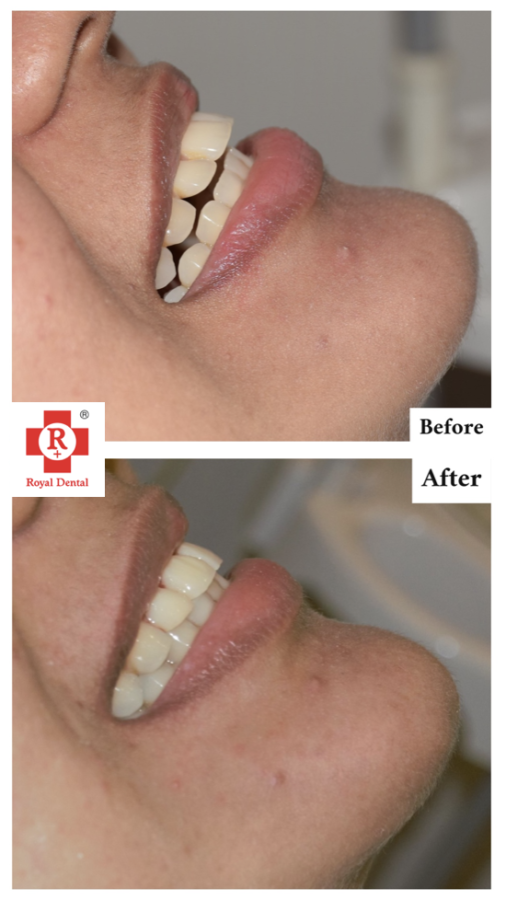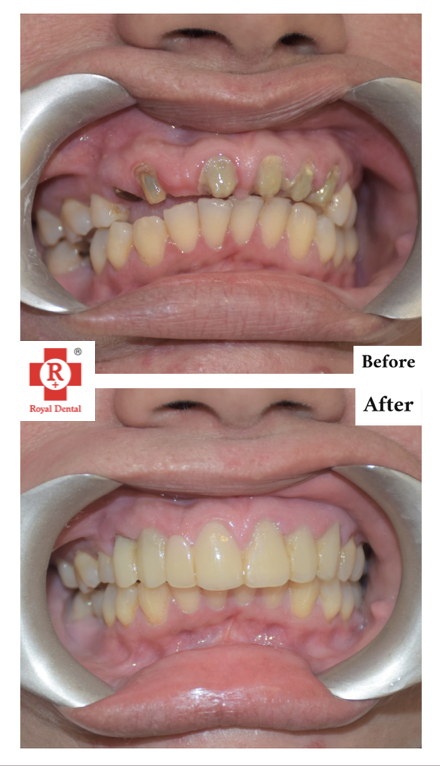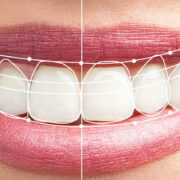A gummy smile can be an embarrassing and self-conscious issue, but it is treatable. If you’re looking to reduce the size of your upper teeth to fix gummy smile, there are a few simple steps you can take to achieve. With the help of your dentist, you can use a combination of treatments like contouring, crowns, and veneers to reduce the size of your upper teeth and correct a gummy smile. This step-by-step guide will provide you with the necessary information and resources to make an informed decision about your dental care. From understanding the different treatments available to learning about the cost involved, this guide will help you get the smile you’ve always wanted. So don’t wait any longer, start your journey to a healthier and brighter smile today!
What is a Gummy Smile?
A gummy smile is when a portion or all of a person’s upper teeth are visible when they smile, giving their smile a “gummy” appearance. There are many factors that can contribute to a gummy smile, but the most common cause is when the upper teeth are too long and create a downward slope in the gum line.

This causes your teeth to be pushed out of their natural position and creates a gummy smile. If you’re self-conscious about your smile and have been diagnosed with a gummy smile, there are a few treatment options available to reduce the size of your teeth. A gummy smile can be embarrassing, but there are treatments available to help improve the appearance of your smile.
Causes of Gummy Smile
A gummy smile can be caused by a number of factors, including genetics, dental habits, and tooth misalignment. Genetics can play a role in the appearance of a person’s smile, meaning a gummy smile may run in the family. If your family members have a gummy smile, there is a chance you may inherit the same smile. Additionally, if you were born with naturally short teeth, you may be more likely to have a gummy smile.
Dental habits can also play a role in the appearance of a person’s smile. For example, if you have a habit of clenching or grinding your teeth, you could be putting unnecessary pressure on your teeth and gums, which may cause your gums to recede, creating a gummy smile. Another potential cause of a gummy smile is tooth misalignment. If one or more of your teeth are misaligned, they may be pushed out of their natural position, creating a gummy smile.
Treatment for reducing size of upper teeth to correct Gummy Smile
As mentioned above, there are several treatment options available for correcting a gummy smile. The type of treatment you select for correcting a gummy smile will be dependent on a number of factors, including the severity of the issue, your dental health, your budget, and the aesthetic goals you have for your smile.
The following are the most commonly used treatments for correcting a gummy smile:
Contouring – Contouring is a procedure used to reduce the length of the upper teeth while maintaining their health. This procedure is applied to the gum line of the upper teeth and is a quick, non-invasive procedure. This procedure can be used alone or in combination with other treatments like crowns or veneers.
Dental Crowns – Crowns are a type of dental restoration that can be used to reduce the length of the upper teeth. Crowns are placed on the upper teeth to change their shape and size, correcting a gummy smile.



Veneers – Veneers are another option used to correct a gummy smile. Veneers are a type of dental restoration that are applied directly to the surface of the teeth to change their shape and size.
Crown Lengthening: Crown lengthening is a procedure that’s used to correct problems with tooth length. It can be used to correct issues such as gingival exposure, where the patient’s gums are receding and exposing the root of their teeth so they appear to be longer than they actually are. Crown lengthening involves cutting away the enamel on a tooth, exposing the dentin beneath it, and then adding a new layer of enamel over it. This makes the tooth appear shorter but has no effect on its function or strength.
Pre-treatment evaluation | Gummy Smile
- Before beginning any treatment for correcting a gummy smile, your dentist will perform a thorough dental examination.
- During your examination, your dentist will inspect your teeth and gums to identify any potential issues, such as tooth misalignment, that may be contributing to your gummy smile.
- Once your dentist has identified the cause of your gummy smile, they will be able to recommend the treatment option that is best suited for your situation. In addition to inspecting your teeth, your dentist will also take x-rays to get a full picture of your current dental health and determine what treatment option is best for you.
- During your x-ray, your dentist will take x-rays of the upper and lower teeth to ensure all areas are being treated appropriately. The x-rays will also help your dentist determine the best type of restoration to use for your treatment.
Post-treatment care | Gummy Smile
The most common treatment for reducing the size of upper teeth to correct a gummy smile is a combination of crown lengthening and cosmetic gum surgery. Crown lengthening involves removing excess gum tissue to expose more of the tooth, creating the illusion of longer teeth. Cosmetic gum surgery involves reshaping the gum line to reduce the appearance of excessive gum tissue and create a more balanced, aesthetically pleasing smile. In some cases, orthodontic treatment may also be recommended to help reposition the teeth and achieve a more harmonious smile. However, the best course of action will depend on the individual case, so a consultation with a dentist or oral and maxillofacial surgeon is recommended.
Once you have completed your treatment for correcting a gummy smile, your dentist will recommend a post-treatment care plan that is appropriate for your situation. Your post-treatment care plan may include steps like maintaining good oral hygiene, using interdental cleaners, and wearing a retainer. Your dentist may also recommend that you follow up with them regularly for checkups to ensure the longevity of your treatment.
Cost of Gummy Smile Treatment
The cost of treatment will depend on a number of factors, including the type of treatment you select, your insurance coverage, and your dentist’s office fees. The average cost of contouring is $1,100, the average cost of crowns is $1,500, and the average cost of veneers is $1,700.



The cost of treatment will depend on a number of factors, including the type of treatment you select, your insurance coverage, and your dentist’s office fees. The average cost of contouring is $1,100, the average cost of crowns is $1,500, and the average cost of veneers is $1,700.
Risks and complications
As with any dental procedure, there are risks and complications associated with correcting a gummy smile. Your dentist will conduct a thorough risk assessment to identify potential complications that may arise during your treatment. However, there are a few common risks and complications associated with correcting a gummy smile, including:
Retreatment – Retreatment is a potential risk that may occur if one or more of your teeth need additional treatment. If one or more of your teeth require additional treatment, your dentist may decide to perform the procedure again or combine the treatments into one session.
Root sensitivity– Root sensitivity is a common risk that can occur during tooth contouring. If your dentist accidentally nicks the root of your tooth during the procedure, there is a chance that your tooth may become sensitive. Your dentist can recommend ways to help alleviate the root sensitivity, such as applying an anesthetic to the area or placing a protective barrier on your tooth.
Other considerations
Before you decide to treat your gummy smile, it’s important to understand that this is a cosmetic treatment. This means that the dental procedure will improve the appearance of your smile, but it will not have an impact on your dental health.
While many of these treatments can be used to improve the health of your teeth. Not all of them are appropriate for treating tooth decay or gum disease. If you have severe tooth decay or gum disease, your dentist may recommend a different treatment, like a root canal or gum surgery, to help correct your dental issues.
Conclusion
A gummy smile can be a very embarrassing and debilitating condition. But with a little bit of research, you can find some treatments that can correct this issue. There are a few simple treatments available for correcting a gummy smile including contouring, crowns, and veneers. The cost of treatment will depend on the type of treatment you opt for. Make sure to maintain a healthy lifestyle to avoid any complications after the treatment. These are just a few things you need to know when considering treatment for a gummy smile. With a little bit of research and information. You can find the right treatment for your condition and correct this issue for good.
If you have any dental problems, then make an appointment with our expert Dentist at Royal Dental Clinics. SAPTeeth are the best possible solutions for this materials that restore natural aesthetics. Watch patient testimonials to know more. Hear what patient has to say for filling treatment at Royal Dental Clinics.






